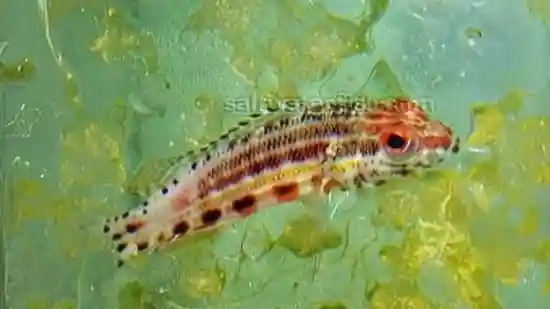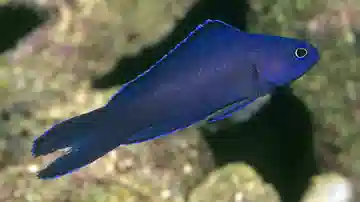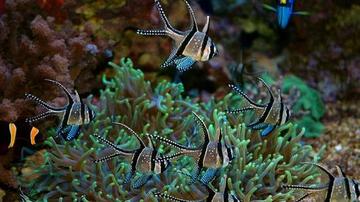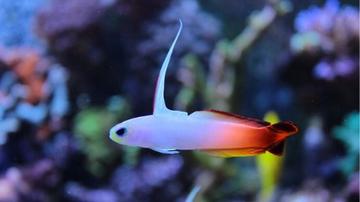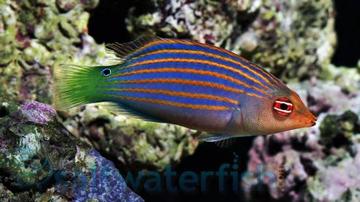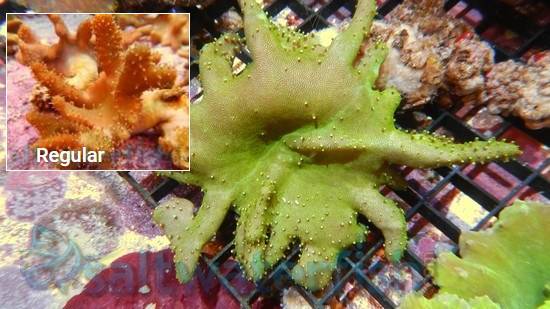Harlequin Bass
Serranus tigrinus
(0 Reviews)

Harlequin Bass
Serranus tigrinus
(0 Reviews)
{{ item.name }}
Size: {{ item.extra_field_3 }}
${{ getFormattedPrice(item.saleprice) }} ${{ getFormattedPrice(item.price) }}
To join the waiting list, click here
Free Shipping
With
$199.00
or more in Marine Life.
More details...
Harlequin Bass Care Facts
| Care Level: | Easy |
|---|---|
| Temperament: | Semi-aggressive |
| Diet: | Carnivore |
| Origin: | Atlantic Ocean |
| Minimum Tank Size: | 70 gallons |
| Acclimation Time: | 3+ hours |
| Reef Safe: | Monitor |
| Coral Safe: | Yes |
| Invertebrate Safe: | Monitor |
| Lighting: | |
| Placement: | |
| Waterflow: |
Harlequin Bass (Serranus tigrinus): A Comprehensive Guide for Saltwater Marine Aquarium Enthusiasts
The Harlequin Bass, scientifically known as Serranus tigrinus, is a captivating and striking species that has gained popularity among marine aquarium enthusiasts. This educational and formal product description will provide valuable insights into keeping this unique fish in your saltwater aquarium, covering various essential aspects to ensure its well-being and compatibility with other tank inhabitants.
Habitat of the Harlequin Bass: Exploring the Western Atlantic Ocean
The Harlequin Bass is native to the Western Atlantic Ocean, particularly the Caribbean Sea and the Gulf of Mexico. In its natural habitat, it prefers coral reefs, rocky crevices, and ledges. These locations offer them shelter and a suitable environment for hunting prey.
Reef Compatibility of the Harlequin Bass: A Graceful Presence in Your Reef Tank
The Harlequin Bass is generally considered reef-safe, making it a suitable addition to a reef tank. It tends to explore and hover around the live rock and corals without causing harm to them. However, like most fish, there may be occasional exceptions, so careful observation is recommended when introducing it into a reef environment.
Size and Lifespan of the Harlequin Bass
This species is relatively small, with an average size ranging from 2 to 4 inches long when mature. The Harlequin Bass can live up to 5 to 7 years in the right conditions and with proper care, providing aquarium enthusiasts with a delightful, long-term companion.
Diet in Captivity: Culinary Preferences of Harlequin Basses
Harlequin Basses are carnivorous predators in the wild, primarily feeding on small crustaceans and fish. In captivity, they can be offered a diet of high-quality marine pellets, frozen or live foods such as brine shrimp, mysis shrimp, and finely chopped seafood. A varied diet is essential to ensure optimal health and vibrant coloration.
Aquaculture and Availability of the Harlequin Bass: Rarity in Captivity
While less commonly aquacultured than other marine species, the Harlequin Bass is occasionally available to hobbyists through reputable suppliers. Their availability may vary, so checking with trusted sources, such as Saltwaterfish.com, for their current stock is advisable.
Compatibility of the Harlequin Bass with Other Fish and Invertebrates: Peaceful Coexistence
The Harlequin Bass is generally peaceful and can coexist with various tank mates. However, it's crucial to choose compatible companions. Here are five suitable tank mates to consider:
- Clownfish (Amphiprion spp.): These colorful and popular reef fish are known for their compatibility with the Harlequin Bass.
- Firefish (Nemateleotris spp.): Firefish are peaceful and add a touch of elegance to your aquarium with their vibrant colors.
- Royal Gramma (Gramma loreto): Their striking appearance and mild temperament make them a great choice.
- Blennies (Ecsenius spp.): Small and often entertaining to watch, blennies are compatible with the Harlequin Bass.
- Cleaner Shrimp (Lysmata spp.): These invertebrates provide a valuable cleaning service in your aquarium and usually get along well with the Harlequin Bass.
Sexual Dimorphism of the Harlequin Bass: Subtle Differences
Distinguishing between male and female Harlequin Bass can be challenging based on physical characteristics alone. In some cases, males may exhibit slightly brighter colors and be slightly larger, but the differences are often subtle.
Juvenile to Adult Coloration Changes in the Harlequin Bass: A Transformation in Hues
Juvenile Harlequin Bass typically display a more subdued coloration, often characterized by shades of brown, while adults boast vibrant hues of orange, red, and yellow. Their transformation as they mature is a captivating sight in any aquarium.
Temperament of the Harlequin Bass: Peaceful Presence in Community Aquariums
Harlequin Basses are generally peaceful and add great to community aquariums. They are not known to be aggressive towards other fish or invertebrates, provided they have sufficient hiding spots and a suitable environment to establish their territory.
Detailed Tank Requirements of the Harlequin Bass: Creating a Suitable Habitat
Minimum Aquarium Size: A tank with a capacity of 30 gallons or more is recommended to provide ample swimming space and accommodate their territorial instincts.
Water Conditions:
- pH: Maintain a stable pH level between 8.1 and 8.4.
- Salinity: Keep the salinity levels within the standard range of 1.020 to 1.025.
- Water Temperature: Maintain a temperature range of 75°F to 82°F (24°C to 28°C).
- Water Flow: Provide moderate water flow to mimic the natural reef environment and ensure proper oxygenation.
Other Common Names for the Harlequin Bass: Recognizing the Harlequin Bass
The Harlequin Bass may also be referred to as the Tiger Bass or Harlequin Hind due to its striking appearance.
Why Choose Harlequin Bass from Saltwaterfish.com: Quality and Sustainability
Quality Assurance: Saltwaterfish.com is known for providing hobbyists with healthy and high-quality marine life.
Expert Advice: The website offers valuable information and guidance on aquarium care, including the Harlequin Bass, ensuring your fish thrive.
Selection: Saltwaterfish.com offers a selection of Harlequin Bass sourced from trusted suppliers, increasing your chances of finding a specimen that suits your preferences.
Convenience: Ordering from Saltwaterfish.com allows you to have your Harlequin Bass delivered to your doorstep, minimizing the stress on the fish during transportation.
Customer Support: The website offers responsive customer support to address any inquiries or concerns you may have, making your shopping experience smooth and hassle-free.
Harlequin Basses: Beauty and Charm in Your Aquarium
In conclusion, with its mesmerizing coloration and peaceful temperament, the Harlequin Bass can be a delightful addition to your saltwater marine aquarium. By following the guidelines in this comprehensive guide, you can create an optimal environment for this species to thrive, and Saltwaterfish.com stands ready to assist you in acquiring a beautiful Harlequin Bass for your aquarium.
Currently Harlequin Bass does not have any reviews.



